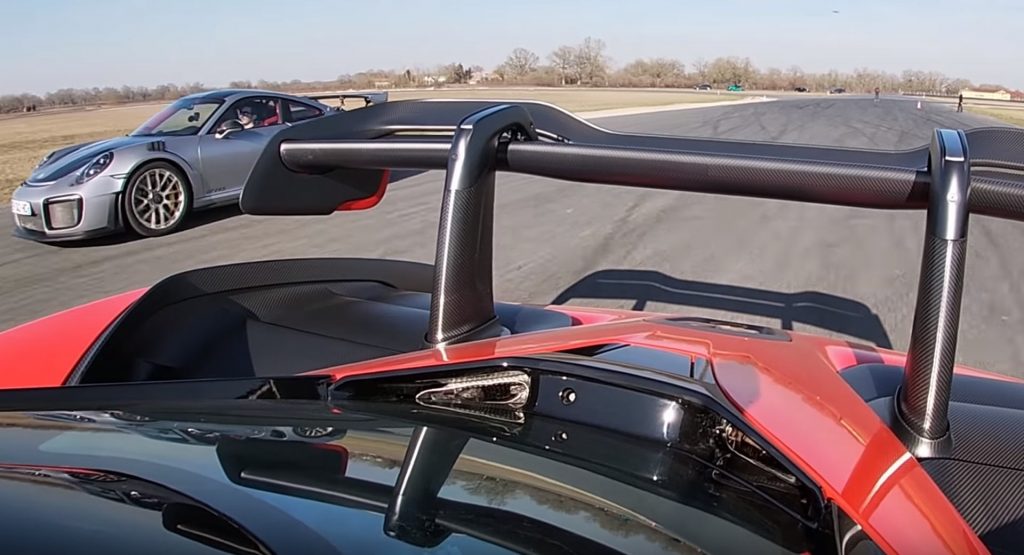What separates a track-focused supercar from a track-focused hypercar? As the following video shows, quite a lot.
The crew over at Motorsport Magazine recently found themselves in possession of both a McLaren Senna and a Porsche 911 GT2 RS. While the two do not compete against each other and have a huge price gap, it would be criminal to not see how they fare against each other.
The magazine organized a 1,000 meter (3,280 ft) standing-start drag race. The Senna is powered by a twin-turbocharged 4.0-liter V8 that pumps out a total of 789 hp. While all of this grunt is sent through the rear wheels, McLaren has equipped the Senna with an absolutely brutal launch control system which makes it one of the most accelerative vehicles on earth. Not only is it quicker off the line than any other road-legal McLaren, but it’s also one of the fastest vehicles with an internal combustion engine currently available.
The 911 GT2 RS, by comparison, seems… well, less fast. The McLaren doesn’t just beat the GT2 RS in a drag race – it absolutely annihilates it and sprints into the distance. At the end of the run, the Senna was perhaps 10-15 car lengths ahead of the German.
Despite the result, it would be silly to say that the Porsche is slow, as its twin-turbocharged six-cylinder engine puts out 690 hp. It also happens to own the Nurburgring lap record for a production car in special Manthey Racing guise. Both in isolation, as well as compared to 99 percent of other cars on planet Earth, it’s an absolute beast. Against a pure-bred hypercar that costs many times as much, though, it can’t help but take a back seat.
Which, we suppose, should make to everyone clear why the automotive press, a few years back, coined the term hypercar: so that it could define a new breed that sits above the, already ballistic, supercars.







